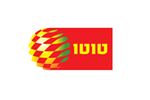Sales managers are constantly looking for ways to evaluate and measure the performance of their teams, especially because in this specific profession, performance is closely linked to compensation and incentive packages. Since employee evaluation is always the first step in any incentive plan, many evaluation methods, both objective and subjective, have been developed. However, in this post we will focus on one unique evaluation system – Employee Ranking.
Employee ranking systems got the media’s attention after a high-profile article in Vanity Fair Magazine discussed Microsoft’s “lost decade”. The article, which analyzes the causes for Microsoft’s competitive position erosion, puts the blame on Microsoft’s organizational culture in general and its employee ranking system more specifically.
According to Microsoft’s “stack ranking” system, unit managers must declare a certain percentage of their subordinates as top performers, good performers, average, and poor. Employees that were ranked in the bottom category were fired. According to Microsoft employees who were interviewed in the article, this system has crippled the company’s innovative minds and created a situation where employees are forced to engage in political games and invest much of their time competing with their peers.
The story of Microsoft’s deterioration due to its unsuccessful ranking system proves yet again just how important positive incentive plans are. Ranking systems that include employee comparison and punishments can have devastating effect on the company’s performance as a whole.
Instead, companies should focus on positively incentivizing their employee, compensating them forget performance – performance that moves the organization forward both culturally and financially. In addition, while employee evaluation is critical to the success of any business, adding a vague ranking component, like the one Microsoft used, does not add value to the firm or the employee and has the potential to create a hostile work environment.
At the end of the day, organizations that choose to punish rather than praise are at serious risk. Punishments and ranking should not be a part of the organization’s evaluation system. Even if they seem logical and easy, in the long term they have the ability to destroy and corrupt the organizational culture. Building a smart incentive program that is based on a constructive evaluation system is real engine behind innovation, employee satisfaction and business success.

























































